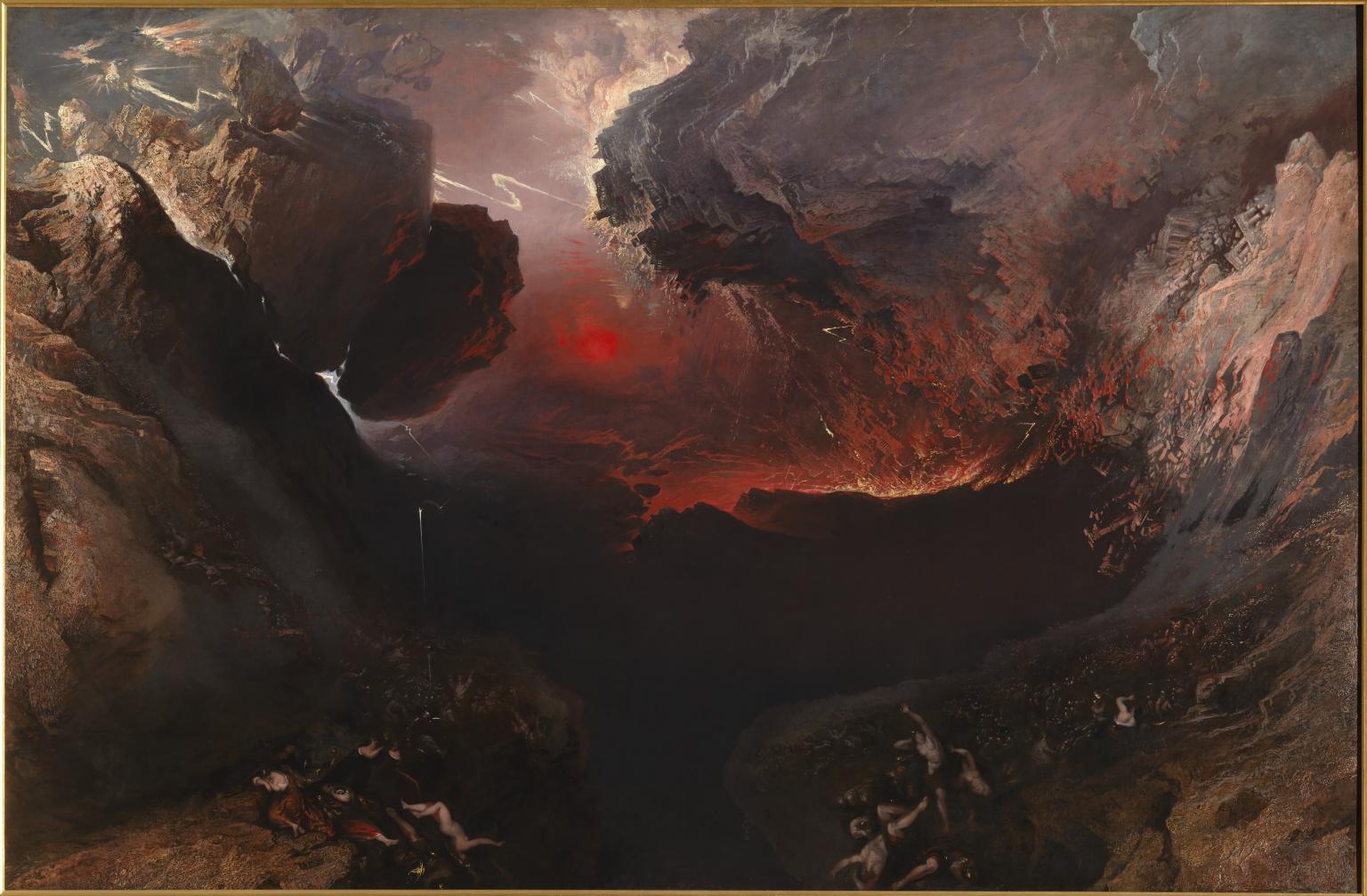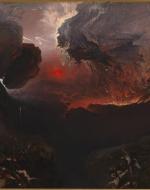Created by Emily Probst on Tue, 03/16/2021 - 20:11
Description:
The Romantic concept of the Sublime is defined by Edmund Burke as "Astonishment, and astonishment is that state of the soul, in which all its motions are suspended, with some degree of horror. In this case the mind is so entirely filled with its object, that it cannot entertain any other" (Burke, On The Sublime). Unlike the rational ideals of the Enlightenment, the Romantic era is characterized by this emotional response to the Sublime - this awe of the majesty and power of nature. This concept is difficult to explain in words, but I find myself understanding a bit better when I see paintings such as The Great Day of His Wrath by John Martin, where I am completely struck by the majesty within it. It is somewhat of a pleasurable terror that I cannot entirely describe.
The word "sublime" has latin origin meaning "set or raised aloft, high up," suggesting an elevating, transcendant experience. When I look at paintings such as this one I am struck with that transcendant sort of awe, wherein I cannot entirely comprehend the feelings overwhelming me. It is worth noting, however, that the sublime is not simply appreciating beauty, but rather an overwhelming emotional response to beauty/power that is all-consuming and humbling at experiencing the utter majesty of nature. As Burke said, "the mind is so entirely filled with its object, that it cannot entertain any other." It is all-encompassing.
Due to its indescribable nature, scholars debate whether the Sublime is a thing, a feeling, an event, or a state of mind. Perhaps it is a combination of all of them. It is a thing when witnessed through art or nature, such as The Great Day of His Wrath, a feeling when considering oneself viewing the painting, an event where the awe sets in and the viewer is overwhelmed, and a state of mind when one is able to seek the Sublime in their life by appreciating the majesty of nature.
Copyright:
Associated Place(s)
Part of Group:
Featured in Exhibit:
Artist:
- John Martin


